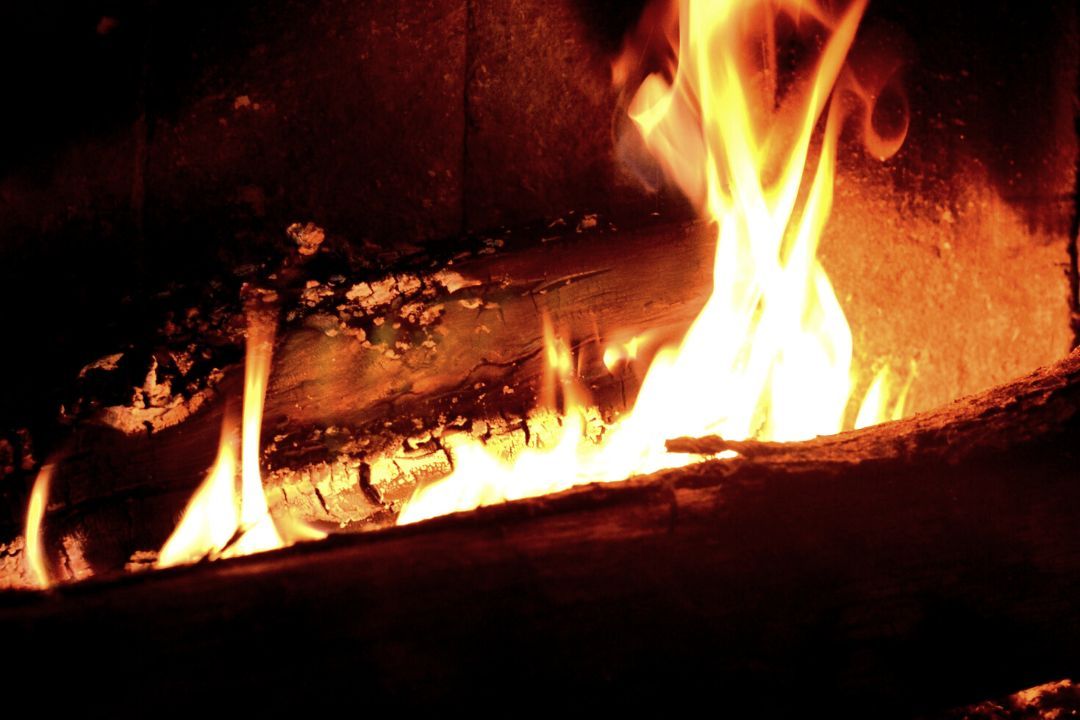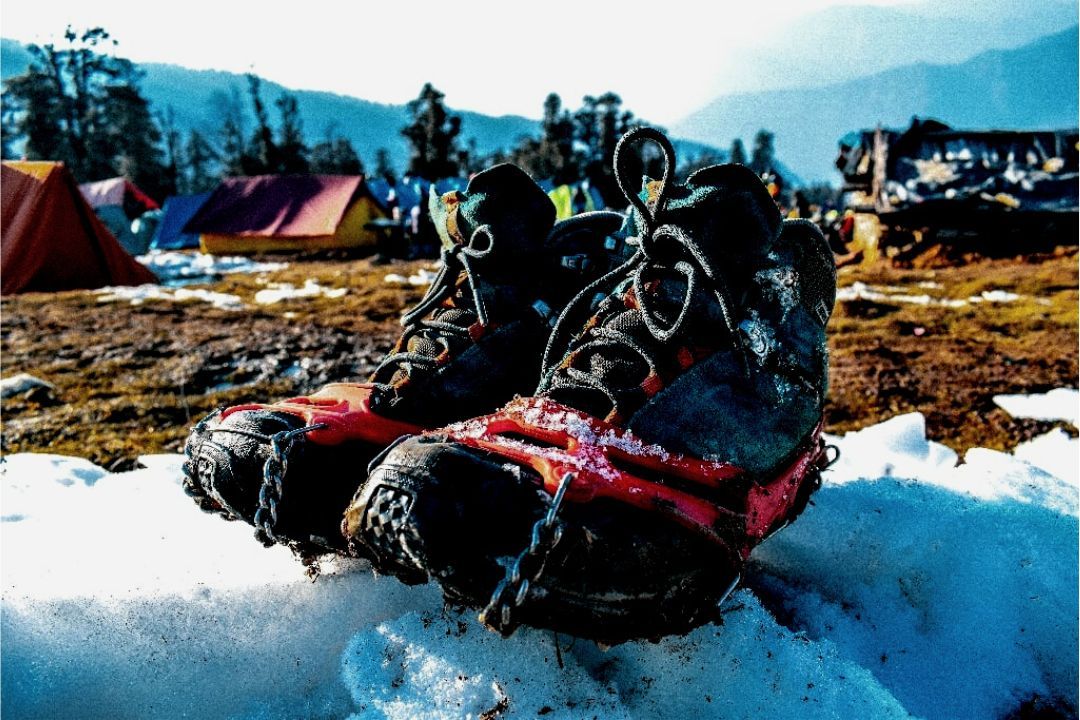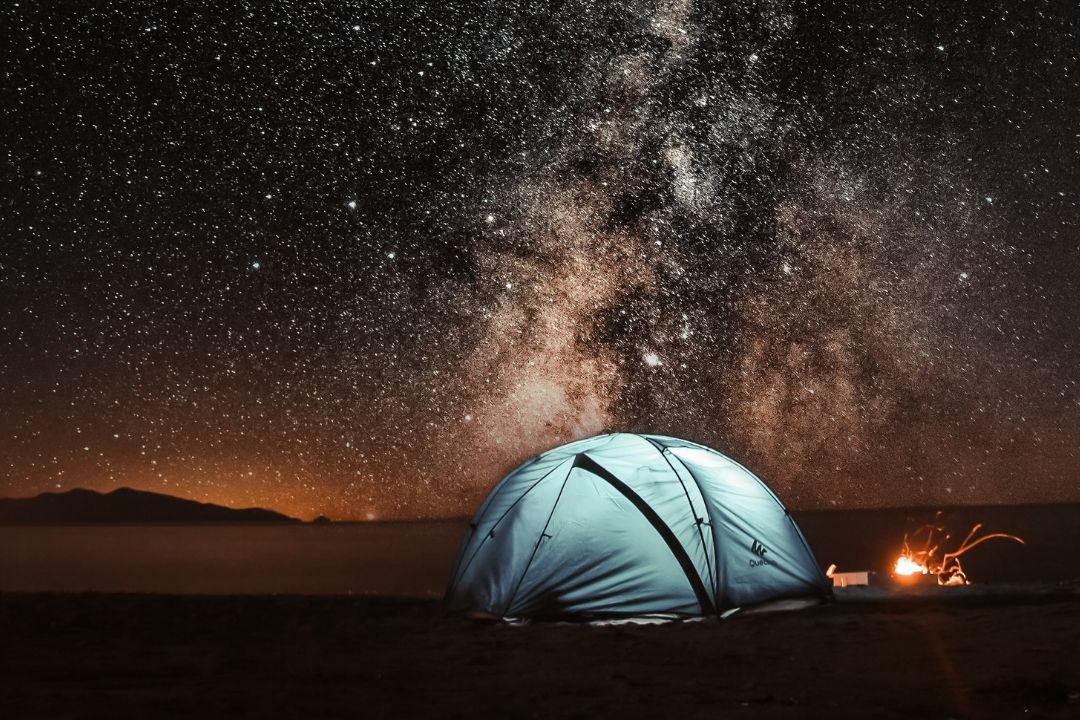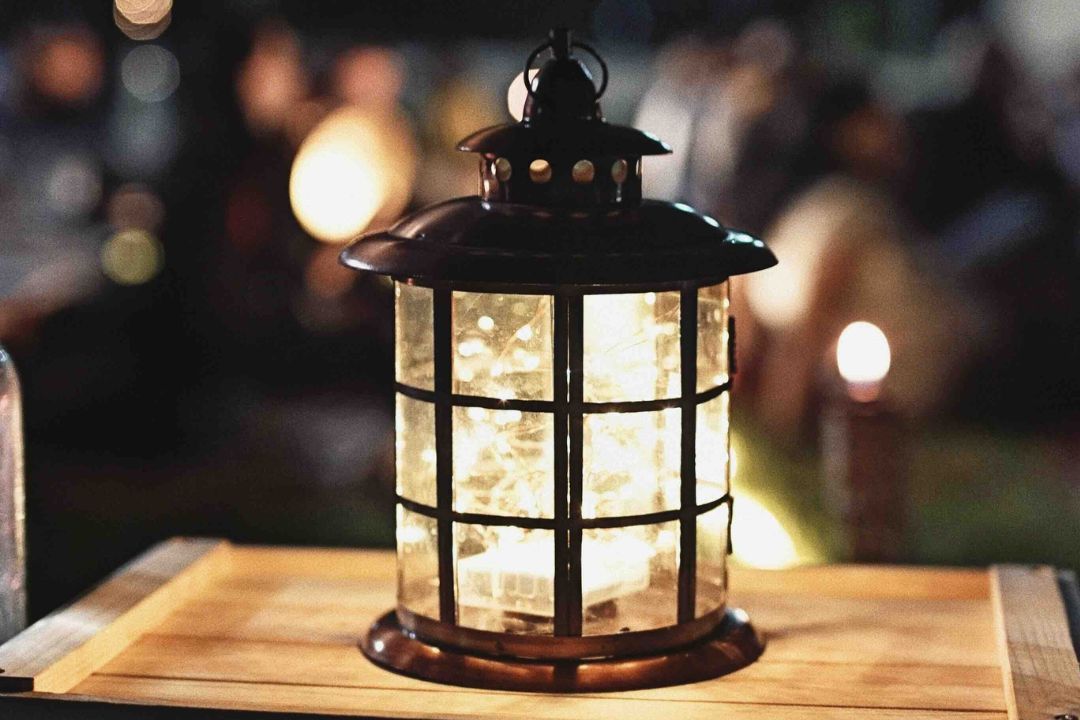Hammock Camping In Winter: Yes It Is Possible
Hammock camping can be done all year round, but in winter it can be a challenging experience. This beginner’s guide will give you everything you need to plan your winter hammock camping trip.
Some people might beg to differ, but winter is a beautiful time of year to go camping, and even more enjoyable when you’re doing it in a hammock!
Hammock camping can be done all year round if you have the right gear. Sleeping in a hammock is comfortable but in winter it can be a challenging experience. But we want to make sure you have everything you need to stay safe and comfortable while enjoying nature.
With this beginner’s guide, you will have everything you need to plan your winter hammock camping trip. We know that once you try it, you will love it just as much as we do!
So dive into our article for more information on how to get started with winter hammock camping.
Why Winter Hammock Camping Is A Great Idea
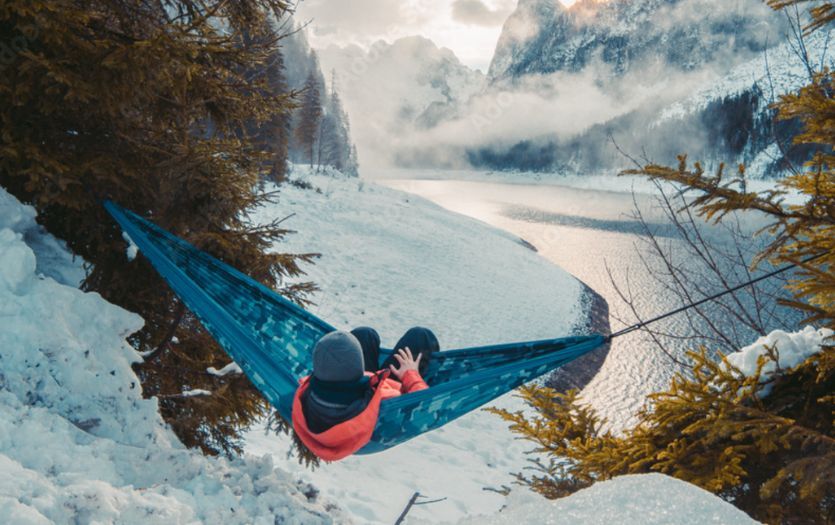
Winter camping can be a great way to get away from the hustle and bustle of everyday life and enjoy some peace in the outdoors. And what better way to camp in the winter than in a hammock?
Hammock camping has many advantages over traditional tent camping, including being lighter and more versatile. But in the winter, there are a few extra reasons why hammocking is the way to go.
First, hammocks allow you to camp off the ground, which means you’ll stay dry even if the ground is covered in snow.
Second, hammocks can be well-insulated if set up properly, so you’ll stay warm even on cold nights.
And finally, they’re a lot easier to carry around than all the extra things that you will have to carry for sleeping in a camping tent, apart from the tent itself(beds, mattresses, etc).
So if you’re looking for a unique and comfortable way to camp this winter, give winter hammock camping a try!
Planning Your Winter Hammock Camping Trip
Winter hammock camping can be a great way to get outside and enjoy the scenery without having to deal with the crowds that summertime camping brings. But there are a few things you need to keep in mind when planning your trip to make sure you have a safe and enjoyable experience. Here are a few tips to help you plan your winter hammock camping trip.
Selecting Your Area of Campsite
When selecting your campsite, make sure to pick an area that is clear of any potential hazards like widow makers (dead branches that could fall on your hammock) or other obstacles that could trip you up. You'll also want to make sure you have a clear view of the sky so you can take advantage of the warm sun during the day and the stars at night.
Proper Location To Set Up Camp
Once you've selected your campsite, finding the proper location to set up camp is important. You'll want to make sure you're not too close to any potential hazards like cliffs or bodies of water. This is because areas near water sources or cliffs tend to be cold spots and make you uncomfortably cold during the night. Try choosing an area that will provide some shelter from the wind.
Keeping Safety Gears Handy
It's always a good idea to keep a few safety items handy when camping. Make sure you have a first-aid kit, a whistle, fire starters, multitools, and some flashlights or headlamps within easy reach in case of an emergency.
Having A Handy Power Source
One of the challenges of winter camping is keeping your gear powered up. If you are backpacking and cannot bring a portable gasoline generator, bring along a solar-powered one, like those from Jackery. A power station like a Goal Zero Yeti can also help you to charge your devices when necessary.
Check out the video below of solo hammocking in winter:
What Gear Do You Need for Winter Hammock Camping
If you’re planning on hammock camping in winter, there is some special gear you will need to stay warm and comfortable.
Hammock
Choose something that is specifically designed for winter use. There are a few things to look for when choosing a winter hammock.
First, it should be made from a durable and weather-resistant material, like ripstop nylon.
Second, it should have a double-layer construction to trap heat, and third, it should come with a built-in mosquito net to keep out the cold.
Hot Tent & Tent Stove
This is a complete game-changer for winter camping. If your campsite is covered with snow and temperatures remain below freezing point throughout the day, it is better to not risk it to set your hammock out in the open.
Bring in a hot tent specially designed for winter hammock camping (like the OneTigris Tegimen Hammock Hot Tent) where you can attach your hammock easily and also stay warm. You'll also need a lightweight stove tent for maximum warmth.
Rain Fly
A rain fly is a waterproof and windproof camping tarp that goes over your hammock (or even your tent )to protect you from the elements. If you have a proper hot tent, you might skip this.
When choosing a rain fly, make sure it is made from a durable and weather-resistant material, like ripstop nylon. And be sure to choose a size that is large enough to cover your entire hammock and still has some extra room on the sides.
Under quilts
Under quilts are insulated blankets that hang beneath your hammock and trap heat, keeping you warm all night long. They are easy to set up and take down, and they pack small so they won't take up too much space in your backpack. You might also consider a top quilt for double protection if it is too chilly.
Sleeping Pads
When you are planning to spend a night in your hammock, an extra layer of warmth and comfort can make all the difference. A sleeping pad will exactly provide you with this and also add a layer of cushioning, making it more comfortable to sleep in your hammock.
Stove and Fuel
If you want to enjoy a hot meal or a cup of coffee in the morning, you will need to bring along a stove and some fuel. There are many different types of camping stoves to choose from, so select one that best suits your needs. And be sure to pack enough fuel for your entire trip. A good rule of thumb is to bring one can of fuel for every three days of camping. You can also bring a lightweight stove that can run on wood for saving some expenses and weight as well.
Sleeping Bag
Sleeping bags come in a variety of different temperatures, so be sure to choose one that is appropriate for the conditions you will be camping in.
Camping Pillow
This might be unnecessary for some but you can bring one for added comfort. Camping pillows are typically small and lightweight, so they won’t take up much space in your pack.
Hiking Boots
If you will be hiking to your campsite, make sure you have a good pair of hiking boots that are comfortable and fit well. Also, for icy conditions, use a pair of microspikes for maximum traction.
Warm Clothing
Of course, you will need to pack some warm clothing to keep you comfortable during the night. But don't pack too heavy. Be sure to layer your clothing to easily add or remove layers as needed. Also, don't miss your gloves and hats.
Also, check out our article on Cliff Camping
How To Set Up Your Hammock For Winter Camping
Now that you know what gear you need, let’s take a look at how to set up your winter hammock camp.
Setting Up
First, find two trees that are about 10-15 feet apart. Make sure the trees are sturdy and free of any dead branches that could fall and hurt you. You can also bring a lightweight hammock stand, and Eno Nomad will be a great choice.
Next, wrap your hammock straps around the trunk of each tree. Use a proper suspension system with wide straps, made from a durable material like polyester or nylon, and they should be about 2-3 inches wide. Avoid thin ropes.
To secure the straps, you can use carabiners, knots, or even webbing. Just be sure whatever you use is strong enough to support your weight.
Skip all these if you have a hot tent!
Hang Your Hammock.
First, thread one end of the hammock through the loop on one of the straps.
Next, take the other end of the hammock and thread it through the loop on the other strap. The Hammock should now be suspended between the two trees or stands. If you have an external bug net, you can tie it with your hammock anchors and spread it.
Sleeping Bags & Under Quilts
If you are using an underquilt, hang it beneath the hammock before adding the sleeping bag. Now it’s time to add your sleeping bag to the hammock.
First, unzip the sleeping bag and lay it flat on the ground, and fold it in half lengthwise.
Next, roll it up from the bottom. Once the sleeping bag is rolled up, place it in the hammock. If you’re using a camping pillow, now is the time to add it to the hammock as well.
Rain Fly
If you don't have a hot tent, bring in a rainfly.
First, thread one end of the rain flies through the loop on one of the straps.
Next, take the other end of the rain fly and thread it through the loop on the other strap. The rain fly should now be suspended over the hammock.
To secure the rain fly, you can use carabiners, knots, or even webbing. Just be sure whatever you use is strong enough to support the weight of the rain fly.
And that’s it! You’re now ready to enjoy a cozy night in your winter hammock camp.
Hammock Camping Tips For Staying Warm & Comfortable In Winter
Hammock camping can be a great way to enjoy the outdoors in winter, but it's important to be prepared. Here are some tips to help you stay warm and comfortable while winter hammock camping.
First, make sure you have a good sleeping bag. A 0-degree bag is a good choice. A bag that is rated for cold weather will help you keep warm throughout the night. In addition, use a sleeping pad or blanket in your sleeping bag to further insulate yourself from the cold.
Second, knowing the correct way to dress in layers will help you regulate your body temperature and stay comfortable while hammock camping in winter.
Make sure you have a base layer, mid layer, and outer layer. The base layer should be made of wool or synthetic material to wick away moisture. The mid layer should be something insulating like fleece, and the outer layer should be waterproof and windproof.
Third, be sure to pack some emergency gear apart from all the necessary gear for a safer winter hammock camp. This includes items like a radio, map, compass, handheld GPS device, or even an ABC watch that will be helpful, in case you need to call for help.
Fourth, it's also important to have a plan B in case the weather takes a turn for the worse. Have a backup shelter like a tarp or tent, and be sure to know how to set it up.
Fifth, packing the proper food and drink will help you stay nourished and hydrated while winter hammock camping. Pack high-energy foods like nuts and dried fruit, and make sure you have plenty of water to drink throughout the day. If you like to cook while camping, pack a portable stove and fuel.
Last, but not least, be sure to enjoy yourself!
Enjoying Nature While Winter Hammock Camping
Winter can be a beautiful time to go camping. The air is crisp and fresh, and the snow-covered landscape is like something out of a storybook. However, camping in winter comes with its own set of challenges. But with a little planning and the right tools, you can avoid them.
With the leaves off the trees, you can get an unobstructed view of the stars, and in some parts of the country, you may even be able to see the Northern Lights. Winter camping also presents an opportunity to see some amazing animals in their natural habitat.
So, if you're looking for a unique way to enjoy nature, consider winter hammock camping.
Just remember to let someone know where you are going and when you plan on returning always. This is crucial in case something happens and you need to be rescued.
So, don't let the freezing temperatures stop you, take your camping gear or buy something new from our top picks and get going! Take your time, relax, and take in the beauty of nature.
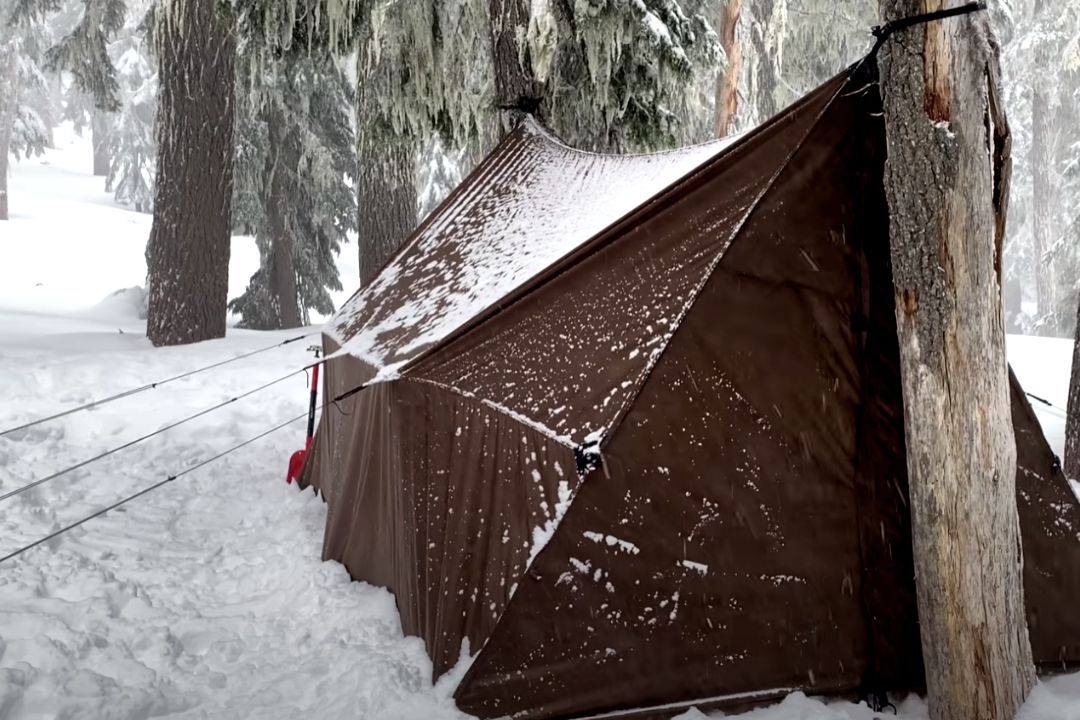
Also, look at some other articles we wrote:
